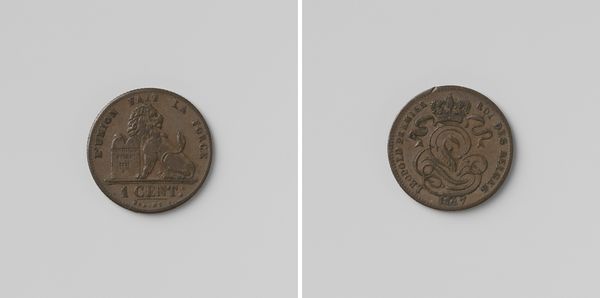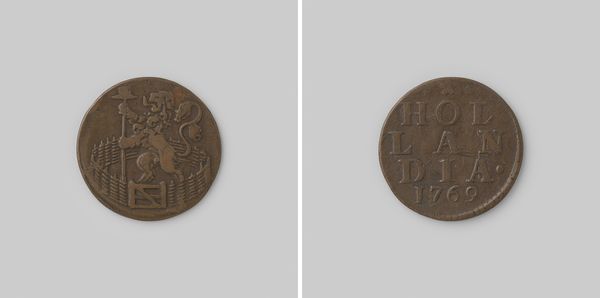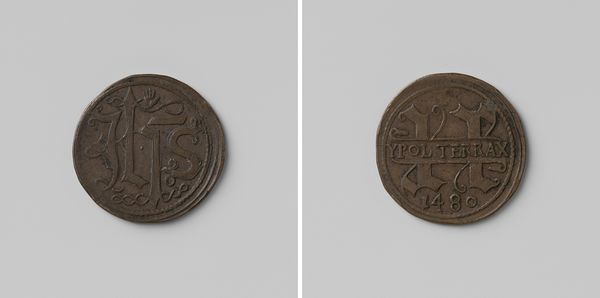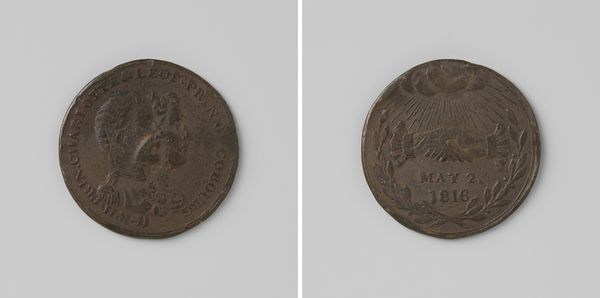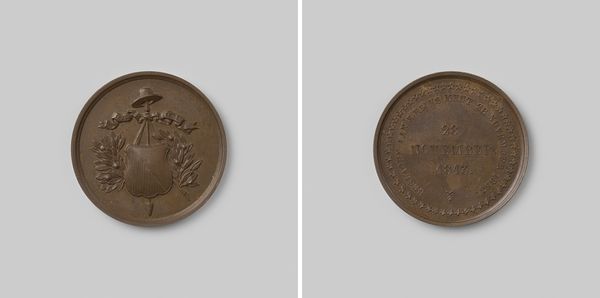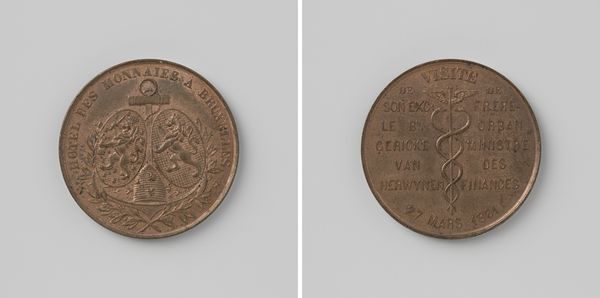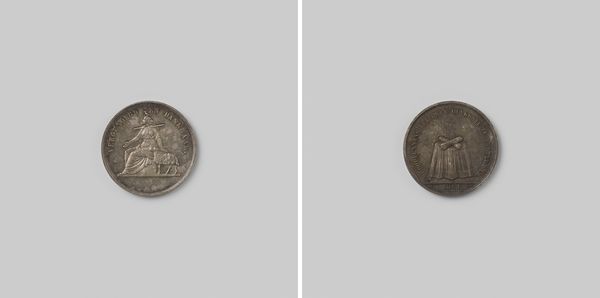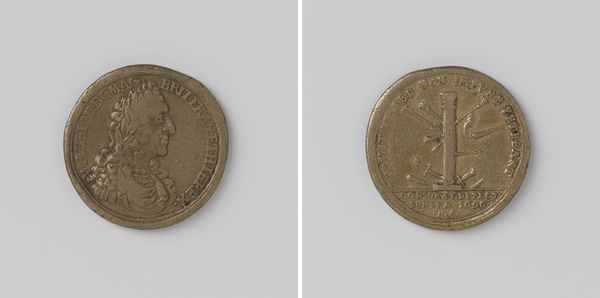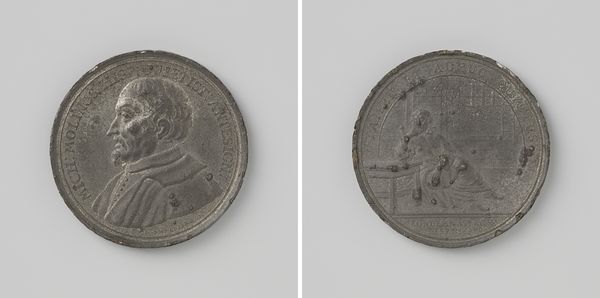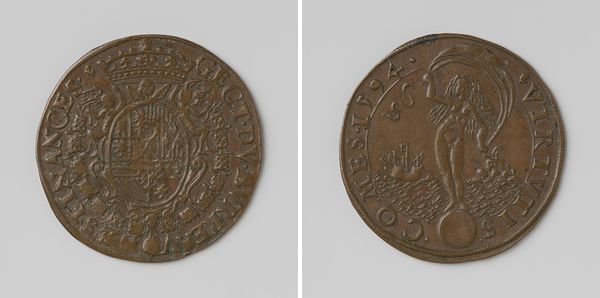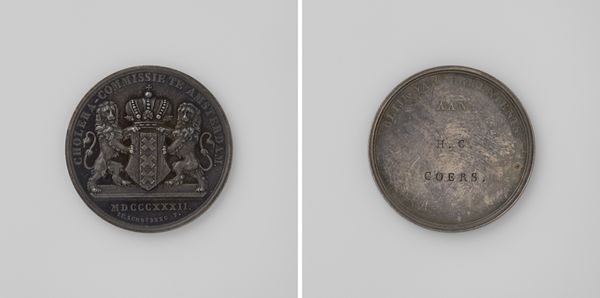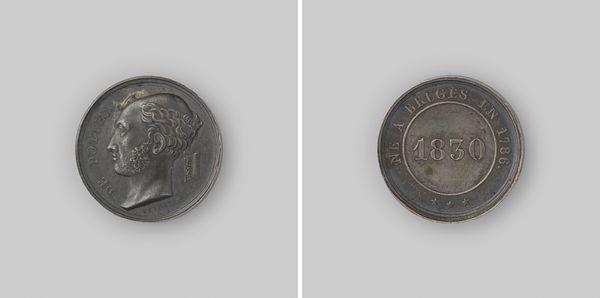
Protestants protest tegen de invoering van de bisschoppelijke hierarchie in Nederland 1853
0:00
0:00
laurentjosephhart
Rijksmuseum
Dimensions: diameter 5.5 cm, weight 70.20 gr
Copyright: Rijks Museum: Open Domain
Editor: So, this is "Protestants protest tegen de invoering van de bisschoppelijke hierarchie in Nederland," made in 1853 by Laurent Joseph Hart. It’s a bronze relief currently at the Rijksmuseum. It seems to be about a religious conflict and carries quite serious undertones. What do you see in this piece, that maybe I'm missing at first glance? Curator: This medal provides a fascinating snapshot into the socio-political tensions of 19th-century Netherlands. It memorializes the Protestant resistance to the re-establishment of the Catholic episcopal hierarchy. The figure on the front, I believe, symbolizes the Dutch Maiden or ‘Vrijheid,’ crushing the papal symbol, the Keys of Saint Peter. Do you think it’s just a condemnation of Catholicism, or does it signal something more profound about Dutch national identity at the time? Editor: That’s a good point! The crushing gesture, read in the context of Dutch identity, could also imply an assertion of independence from any external religious authority. What do you think Hart intended to communicate about the role of religion in civic life through this imagery? Curator: Hart's decision to immortalize this particular moment underscores the struggle to define Dutch identity amid competing religious and political influences. Remember, the 1848 constitution had just enshrined religious freedom, making this act of protest both a defense of Protestant privilege and potentially a challenge to the very concept of religious equality. Editor: That really changes how I see the piece! Knowing the historical context helps unpack the complexities embedded in the symbolism. I initially thought of it simply as anti-Catholic sentiment. Curator: Exactly! By delving into the historical backdrop and ideological currents of the time, we move beyond simple labels and gain a deeper appreciation of the work’s cultural significance. I think considering this as more than religious symbolism helps unpack the nuances embedded in this historical moment. Editor: I agree. It highlights how historical artworks often reflect the intersectional aspects of identity, politics and religion that define cultural paradigms of a specific period. Thank you, that was insightful.
Comments
No comments
Be the first to comment and join the conversation on the ultimate creative platform.
